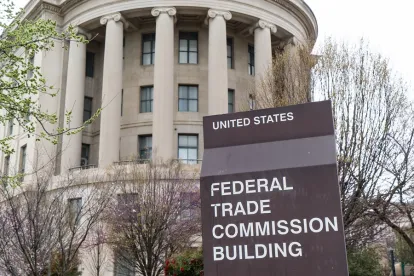As previously blogged about here, here and here, in June 2020, the U.S. Supreme Court in Liu v. SEC, preserved the Securities and Exchange Commission’s disgorgement authority, with drastic limits. Specifically, the Court held that the SEC could continue to mandate securities law violators to give up “ill-gotten gains,” but that disgorgement should be limited to “net profits.” It also opined that a particular defendant’s disgorgement liability should be limited to its own net profits, rather than necessarily facing “joint and several liability” for the net profits of multiple defendants.
Liu’s Application to FTC Actions
As predicted, it did not take long for defendants in FTC actions to seek to extend Liu’s applicability.
The Federal Trade Commission routinely claims to possess equitable monetary remedies such as disgorgement and restitution. In a recent decision in the matter of FTC v. Electronic Payment Solutions of America, a federal district court in Arizona in fact applied the restrictions enunciated in Liu.
In Electronic Payment Solutions of America, the FTC initiated a lawsuit against payment processors and their principals for allegedly facilitating a fraudulent business opportunity scheme perpetrated by a merchant-client. In reliance upon Liu, the defendants moved to limit any equitable monetary liability to their “net profits” and to preclude the imposition of joint and several liability for purported consumer losses.
Importantly, the court considered that restitution and disgorgement are indistinguishable in the context of a “court of equity” which assesses fairness, not punitive measures. The court quoted Liu, stating that in order to avoid transforming an equitable remedy into a punitive sanction, the remedy should be restricted to an individual wrongdoer’s net profits, and must be “restitutionary.” Also noteworthy is that is that the Electronic Payment court pointed out that its holding regarding the applicability of the Liu decision to the Federal Trade Commission deviates from two other Ninth Circuit district court decisions, FTC. v. Cardiff (C.D. Cal.) and FTC. v. Noland (D. Ariz.).
On the issue of joint and several liability, the FTC argued that all defendants involved in consumer losses should be held jointly and severally liable according to Ninth Circuit precedent, regardless of the Liu decision. The defendants argued that this is so only if it can be established that they were “partners engaged in concerted wrongdoing.” Relying upon the Liu decision the court sided with the defendants.
The limits imposed by Liu - and now Electronic Payment – are significant. For example, consider that the difference between net profits and total revenue can be dramatic. Let alone the importance of the potential imposition of joint and several liability. The U.S. Supreme Court is set to tackle issues surrounding the FTC’s equitable authority in the coming months. Until then, the applicability of Liu to FTC actions will continue to be aggressively litigated.
This matter should be of interest to digital marketers and payment processors. Contact an experienced FTC defense attorney that concentrates upon Federal Trade Commission practice, investigations and law enforcement actions.
Government Agencies Directed to Reform Operations
On August 31, 2020, the Office of Information and Regulatory Affairs issued a Memorandum for the Deputy Secretaries of Executive Departments and Agencies. In short, the Memorandum directs government agencies to reform how they operate by elaborating upon “fairness” directives from an executive order issued in May 2020 relating to administrative enforcement and adjudication.
In part, the Memorandum directs:
- That penalties should be proportionate, transparent and imposed in adherence to consistent standards and only as authorized by law
- Agencies to establish policies of enforcement discretion that decline enforcement or the imposition of a penalty, as appropriate, in the course of enforcement when the agency determines that the regulated party attempted in good faith to comply with the law
- Agencies to make the public aware of the conditions in which investigations and enforcement actions will be brought and provide the public with information on the penalties sought for common infractions
- Agencies should adopt expiration dates and/or termination criteria for consent orders, consent decrees, and settlements that are proportionate to the violation of the law that is being remedied (“Decade-long settlement terms that are disproportionate to the violation(s) of law should be strongly disfavored absent a clear and convincing need for time to implement a remedy such as, e.g., infrastructure improvements or long-term remedial actions”
- Consent orders, consent decrees and settlements should not bar private parties from disseminating information about their cases
- Agencies, if they have not already done so, to establish procedures to encourage voluntary self-reporting of regulatory violations by regulated parties in exchange for reductions or waivers of civil penalties, including grace periods to cure minor violations without fear of penalty
- The heads of all agencies to revise their procedures and practices in light of them, consistent with applicable law and as they deem appropriate in the context of particular statutory and regulatory programs and policy considerations
- Compilation of and reference to a list of best practices for consideration, insofar as consistent with particular statutory authority, regulatory programs or other policy considerations
- That the Government should bear the burden of proving an alleged violation of law – the subject of enforcement should not bear the burden of proving compliance
- That agencies should review their procedures to ensure that members of the regulated public are not required to prove a negative to prevent liability and enforcement consequences in the absence of statutory standards requiring otherwise
- Agencies to consider applying the rule of lenity in administrative investigations, enforcement actions and adjudication by reading genuine statutory or regulatory ambiguities related to administrative violations and penalties in favor of the targeted party in enforcement]
- That administrative enforcement should be prompt and fair
- That agencies should seek approval of an Officer of the United States, or if necessitated by good cause, his or her designee, before entering into a tolling agreement that would have the effect of extending the statute of limitations for an infraction
- That agency regulations should apply limiting principles to the duration of investigations; regulations should require investigating staff to either recommend or bring an enforcement action, or instead cease the investigation within a defined time period after its commencement absent a showing of unusual circumstances that is endorsed by an Officer of the United States, or if necessitated by good cause, by his or her designee
- That if a party has been informed by an agency that it is under investigation, the agency should inform the party when the investigation is closed and, when the agency has made no finding of violation, so state
- That agencies should consider and appropriately adopt estoppel and res judicata principles to eliminate multiple enforcement actions for a single body of operative facts (“Simply put, an agency should have only one bite at the apple to investigate and seek enforcement against a regulated entity for a static factual predicate that is not a continuing or expanding violation”)
- That agency employees' performance metrics and compensation structures should incentivize excellence, accuracy, integrity, efficiency, and fairness in the application and execution of the law (“[E]mployees should not be rewarded on any basis that incentivizes them to bring cases or seek penalties or settlements that are meritless or unwarranted”)
- That administrative adjudicators should operate independently of enforcement staff on matters within their areas of adjudication, and should not engage in ex parte communications with, and should operate independently from, investigators and enforcement staff
- That agencies should develop reporting and disclosure structures for violations of such requirements and should establish command structures for these offices that are independent of each other
- That agency adjudicators’ performance metrics and compensation structures should incentivize fact-based, unbiased adjudication decisions (“Adjudicators should not be rewarded based on the penalties they award or in any other way that misaligns incentives”)
- That the Government should provide favorable relevant evidence in possession of the agency to the subject of an administrative enforcement action, and that agency officials should timely disclose exculpatory evidence to the target party of enforcement using similar procedures as those laid out in the Justice Manual of the U.S. Department of Justice (previously known as the US. Attorney's Manual)
- Agencies to automatically disclose evidence material to the mitigation of damages or penalties
- That rules of evidence and procedure should be public, clear and effective, and that agencies should adopt or amend regulations regarding evidence and adjudicatory procedure to eliminate any unfair prejudice, reduce undue delay, avoid the needless presentation of cumulative evidence and promote efficiency
- That agencies seek to reduce the use of hearsay evidence with limited exceptions
- That agencies should consider incorporating other standards under the Federal Rules of Evidence, and make their rules of evidence and procedure easily accessible on their websites
- That agencies explicitly authorize the representation of regulated parties by legal counsel and in appropriate cases, by qualified representatives (“Agencies should also take steps to avoid disadvantaging parties who are not represented by counsel, including by writing rules of evidence and procedure in plain language)
- That administrative enforcement should be free of improper Government coercion, retaliatory or punitive motives, or the desire to compel capitulation, and that an agency’s selection of targets for investigations or enforcement actions, or other investigation and enforcement decisions should not be so motivated
- That liability should be imposed only for violations of statutes or duly issued regulations, after notice and an opportunity to respond
- That agencies should review their procedures for adjudication to ensure that liability is imposed only after notice and an opportunity to respond
- That, in any document initiating an investigation or enforcement action, an agency should include a citation to the statute and regulation asserted to be violated, and an explanation as to how the asserted conduct is prohibited by the cited statute and regulation
- That information or materials obtained in an administrative investigation or enforcement action should only be referred to the U.S. Department of Justice or other relevant criminal investigation or enforcement authority for criminal investigation in a manner that is consistent with the law and with best practices as established by policies, procedures, and guidelines regarding parallel investigations
- That administrative enforcement should be free of unfair surprise
- That, agencies should ensure they have rules in place that provide parties with a reasonable period of time to respond to filings or charges brought by the agency (“For example, agencies should provide parties with at least as much time to respond to an agency notice of charges as parties would have to respond to filings in civil complaints brought in federal court under the Federal Rules of Civil Procedure, unless the need for urgent action to protect the public warrants otherwise)
- That agencies must be accountable for their administrative enforcement decisions
The practical significance of the procedural safeguards and best practices set forth in the Memorandum will be dictated, in part, by whether they are eventually incorporated via agency rulemaking.




 />i
/>i

